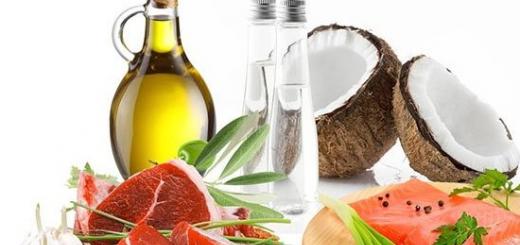Many people associate incense with church rituals. However, the range of its application is much wider. It can also be used exclusively for domestic purposes and used at home. This is an interesting and unique substance that requires close acquaintance. Often, even people who are closely familiar with its smell do not know what incense actually is.
Incense: what is it?
The resin from which incense is made has special aromatic properties unique to it. The smell of incense is difficult to confuse with another. The resin itself is obtained from a plant of the cistus family, which mostly grows on the Arabian Peninsula.
The technology for obtaining the treasured substance is simple - an incision is made in the body of the tree, from which the liquid is collected. Then it needs to be dried. In general, incense obtained by any means is used. Some particles are torn off directly from the bark, others are picked up from the ground on which it dripped. Hence the division of incense by type:
- ordinary,
- selective
Each individual piece of resin is not very durable and can be ground into powder quite easily with the help of basic tools. In fact, the small crumbs obtained in this way are called incense.
Due to the very limited quantity of the parent plant, incense is considered a very valuable material. However, its history has very deep religious roots. It was sacrificed back in the days of paganism and people’s worship of many deities. In sacrificial rituals it was an alternative to animal blood.
Incense has earned this attitude due to its aromatic properties. The strongest smell came from the resin when it was placed on hot coals. The fragrant smoke rose and went into the very sky, to where the gods lived. So people gave them a sign and conveyed their requests.
With the advent and development of Christianity, the substance was borrowed and was also actively used in church rituals. Legend says that incense was among the gifts of the Magi for the birth of Christ.
Among the inhabitants of Ancient Rus', aromatic resin was revered as a means of repelling evil spirits and evil spirits. They fumigated homes with it, and small particles were always carried with them along with the pectoral cross. Faith in his magical power was (and still is) unshakable.
In addition, completely earthly healing and even rejuvenating properties were attributed to incense.
- It was used to treat joint pain in Ancient Egypt by mixing it with other ingredients and rubbing it into the skin.
- To slow down the aging process and smooth the skin from existing wrinkles, incense was added as an ingredient to various cosmetic masks.
The traditions are still observed today. The cosmetology industry uses resin for the same purposes, using new preparation recipes.
Kinds
Often, fumigating resin is divided into different categories according to the place of production. The most famous substance is produced on Mount Athos, in a monastery. Of the entire local assortment, Vatopedi is distinguished. It is believed that this church incense is one of the highest quality among all, explaining this by its properties such as:
Ability for long-term storage;
Quite a long-lasting fragrance, even after stopping the fumigation procedure;
Deep, rich aroma.
To make this product, the highest quality aromatic oils are used, which, in turn, are divided into floral, woody, artificial and natural groups.
In general, recipes for incense made on Mount Athos are kept in the strictest confidence, so almost no one knows for certain the secret of the wonderful aromas that it possesses.
It is worth mentioning several other types of incense that are respected throughout the world.
Athenian incense. The name is directly related to the geographical location of its production. Unlike the above, it is made in private workshops. The main difference is in the concentration of aromatic components.
Jerusalem. A distinctive feature is the appearance of the resin. The local product is presented not in the form of small pieces that are familiar to the eye, but in the form of plates, the thickness of which does not exceed three millimeters.
Monasteries of Lebanon have also made their product famous by supplying the market with incense that has all the proper characteristics.
Production secrets have reached Russian craftsmen. Here production is established on the basis of traditions and recipes established on Mount Athos. Hence its aromatic and physical properties, which are especially valued in beneficial resins.

Although the principle of action is the same, dozens of varieties of incense are nevertheless distinguished. It also differs in price. Cheaper varieties have the same properties as expensive ones, but with much less impact.
Despite this, experts recommend that when choosing incense for use at home, rely on your own feelings and preferences. Each of the species is divided into several subspecies, and all this number of varieties has an individual aroma with special characteristics of the effect. Therefore, there is plenty to choose from.
You may be interested in an article about the benefits and harms of incense sticks. Also, in it we described which ones are better to choose and where to buy them.
Beneficial features
Cistus, a plant from which life-giving liquid is extracted, is listed in the Red Book as an almost exterminated plant and a rarity among the flora of the planet.
In its original form, resin is a very expensive and almost unavailable product. More and more often it is now made using coniferous trees - cedar, spruce and others. This does not prevent incense from remaining the owner of a large number of beneficial properties:
Excellent in treating joint disease, rheumatism, arthritis;
Helps fight colds;
Has a beneficial effect on the skin, eliminating various rashes and inflammations;
Used to treat urinary tract diseases;
Helps strengthen the immune system;
Successfully fights diseases of the gastrointestinal tract, disorders, ulcerative manifestations;
Has a positive effect on the nervous system, calms;
It has a good effect on the functioning of the brain in general. Added to some memory enhancing medications;
Has antiseptic properties;
In some cases it serves as an expectorant;
It is even found in cooking, as an aromatic additive to some drinks.
Taking into account the huge list of incense’s abilities, it is actively used as an indispensable component of some preventive, medicinal and cosmetic products:
tinctures,
cosmetical tools.
Its aroma continues to be appreciated widely. Experts even subjected it to study, and in terms of its effect, they equated the substance used in the fumigation of premises to narcotic drugs, explaining this by the incredible energy charge that occurs in the body when inhaling the fumes.
The charge is so strong that a person begins to experience increased vigor, nervous tension is dulled, until complete peace. A person relaxes under the tide of a wave of pleasant sensations.
Excessive inhalation of smoldering resin can even lead to euphoria. The effect will be maximum if the process is accompanied by a small amount of alcohol. In this, experts see the danger of miraculous crystals. In addition, it turned out that their combustion products can cause an allergic reaction. It can be very difficult: with suffocation, dizziness and even memory loss.
How to use incense at home
Nevertheless, at home, church incense is used as a flavoring agent. To do this, it is not necessary to carry out church rituals in the home using censer and other elements.
All you need is some kind of brazier and coals, you can even take an ordinary spoon. It is important to maintain the required temperature so that the pieces of the substance smolder and smoke.
You can use incense at home at least every day; there are no restrictions on this, it all depends on your needs and the body’s reaction to incense. However, if you remember the advice of ancient monastic healers, you can find some recommendations on this matter:
In case of illness, you need to inhale incense for 2 minutes, maybe a little less. Naturally, through the nose. It is also necessary to incense the entire apartment.
The monks recommend putting about 2-3 small pieces of incense in a censer with coal. You should start censing with icons, of course, while reading a prayer to the Lord, the Mother of God or the saint to whom you are addressing. Afterwards you need to fumigate the entire apartment, reading the prayer “May God rise again,” and then the patient.
If the patient himself fumigates the room with incense, then there is no need to additionally fumigate himself. In this case, place the censer and calmly inhale the aroma for several minutes (2-3).
It is believed that incense purchased in church is the most beneficial and dangerous for evil spirits.
Resin can be added to the censer as needed. There are varieties of incense that burn out faster. The secret of the procedure is that the lower the temperature of the heated resin, the finer the smell.
Which type of incense to choose for your home?
As mentioned above, it all depends on your needs. But according to an unspoken church rule, each type of incense is suitable for certain events, depending on their solemnity and the richness of the aroma of the resin. The brighter the fragrance, the more solemn the moment.
Among the most popular types:
“Bishop” is the most expensive type. It has a bright and rich bouquet of aromas. It is often used in church services on major holidays.
“Altar” - also has a good bouquet, but is not as solemn as the view above. Used in church for daily incense and on simple holidays.
“Cell” - this incense is usually used by monks for burning incense in their cells. It has a restrained, faintly expressed aroma.

Which incense helps with which disease?
To help you navigate the variety of incense varieties, we decided to make a small list: which variety to use in which case. Information taken from an Orthodox website. So:
* On mobile devices, the table may not fit into the viewing area, but it scrolls perfectly horizontally.
That's basically all. We have covered what incense is, its beneficial properties, varieties and types. And the choice, in any case, is always yours.
The temple is a special place. You can come there just like that, in order to pray in silence and solitude. To escape from our noisy world with its endless rush and bustle. Pray in front of the icons, light candles. In general, at least for a few minutes, detach yourself from vanity. And catch a familiar and some kind of nagging smell. What does the old church smell like?
Incense accompanies the service
What it is? Incense for burning incense during worship. And one of the small answers to the question of what the church smells like. Frankincense is an aromatic tree resin.
Types of incense
There are several types of this incense:
Arabian incense. It is also called real. It grows, accordingly, in Arabia.
Somali incense. It has two more names - Abyssinian and African. The roots lie in Ethiopia and Somalia.
Indian incense. It grows, as the name suggests, in India. And also in Persia.
What does he look like
This aromatic resin comes in solid droplets. They all vary in size, are yellow in color and translucent.

Smell
In church, this is not surprising. For he takes part in all church services. Crying without incense is impossible. What does it smell like? The aroma of incense is sweet, with small hints of lemon.
Candle
One of the constant “companions” of worship are candles. And not only in the service they are assistants. When people come to the temple, they first buy a candle to place in front of the icon. Therefore, you can safely add the smell of candles to the smell of incense when thinking about what the church smells like comes to mind.
Types of candles
Church candles come in two types - wax and with an admixture of ceresin. Ceresin is not pure wax, but a waxy substance with various impurities. And how are these candles different? And this is discussed in detail in the next subsection.

Wax candle
What does the church smell like, what candles emit a delicate and pleasant aroma that you want to inhale again and again? Of course, wax. Wax is considered the purest substance. A candle is a small sacrifice to God from a person. Is it really possible to sacrifice something bad to God? No, He is supposed to give the best. And not as in the proverb well known to all of us: “You, God, are worthless to me.” And this attitude towards the Creator is fundamentally wrong. He does not forget to take care of us: he wakes us up in the morning, allowing us to see a new day, responds to our requests, helps and does not leave us in sorrow. Why don't we try to give Him the best?
Okay, let's leave the lyrics. Everything is always pure to God - this is a truth established from ancient times. Clean incense for worship, clean candles, clean oil. In general, everything is the best. Other candles contain impurities and cannot be called pure. In addition to religious motivation, there is also a purely everyday one. Wax does not pollute the air, it emits a pleasant aroma, and most importantly, it does not smoke to such an extent as to spoil temple frescoes and icons.
A candle is a symbol of the burning of human souls with faith. Symbol of soul fire. A visible sacrifice to God from His sinful servants. Someone will say that a wax candle is not cheap. Can sacrifice really be cheap? It is done from the heart. When a person does something from the heart, wants to give a wonderful gift to a loved one, for example, he does not consider the costs. A candle is much cheaper than some decoration for a loved one.

Ceresin candles
Unlike waxy ones, they consist of a waxy substance. And they are not clean. And due to the fact that ceresin candles are a storehouse of impurities, they are also not very useful for use.
What's wrong with these candles? First of all, they smell bad. And if now, answering the question “what does the church smell like?”, only pleasant smells are remembered, then after communicating with “counterfeit” candles they will disappear. And this is just the minimum of troubles. The worst thing is that these candles smoke a lot. And thus they spoil the beautiful temple paintings and pollute the icons.
Yes, they are cheap. But the quality leaves much to be desired. Why are they being sold, another person will wonder. Alas, the concept of benefit exists everywhere. And other parishes are not spared this word. We will not develop this idea in order to avoid condemnation. Let's just keep in mind that nothing better than wax candles has yet been invented.
Confirmation
Anyone who has participated in this sacrament at least once knows what the church smells like, except incense and wax. It smells like peace there. And thus, calm, serene, not tolerant of fuss, which is so lacking outside the gates of the temple. And myrrh - oil with the addition of various incense.
As a rule, the smell of this oil is very pleasant and delicate. When can you encounter him? At the moment of anointing. This happens at the evening service, when the priest draws a cross on the forehead of the parishioner in oil. This is a very rough explanation, but it is made so that it is at least a little clear what anointing is.
And the ritual is as follows: the believer venerates the festive icon standing in the center of the temple, closer to the pulpit. The priest, in turn, stands facing this icon, also in the center of the temple. After the person has kissed the icon, he approaches the priest. And he performs the rite of Confirmation. This aromatic oil is then rubbed all over your face.

It's so easy to commit sins
Let us remember how Krug sings: “The old church smells of wax, I can’t remain silent. It’s so easy to commit sins...”.
What's next, who will remember? “But it’s not easy to atone.” The long-deceased singer very accurately noted. Sin enters us in tons, and leaves us with great difficulty, barely. And how do we atone for our sins? First of all, repentance. And not only in words. We came to confession, listed our sins, the priest read a prayer of absolution over us and...? And went on sinning. Do the same things you repented of. What is the point of such a confession, the question arises.
The meaning of confession is true repentance. And it implies renunciation of sin. Rethinking your own life, when a person comes to the realization that everything! I don’t want to live like this anymore and do this and that. This is the meaning of repentance, in avoiding sin and voluntarily abandoning it.
When we sincerely repent and ask for forgiveness, then we want to make at least a small contribution to God. And we wonder what we can give to the One who gives us everything? Light a candle, pray from the heart, thank you from the heart. This is quite possible for everyone.

Superstitions
Sometimes a person is perplexed: although I’m not in church, it smells like incense. Indeed, this rarely happens. There is no need to be afraid of this. In fact, the body sometimes tends to produce a so-called “program glitch.” Let's say someone hasn't eaten sausage for a long time and really wants to eat it. And it seems to him that the apartment smells of sausage, although there is no trace of it in the refrigerator, and no one can cut it at the moment. This is a game of the body, do not pay attention.
It's the same here. People begin to panic and attribute supernatural explanations to this. Even to the point of warning of one's own demise. All this is nonsense, the real one. You should not look for mystical meaning in something where there is none.
In general, there is no need to connect the church and mysticism. God will never give a person what he cannot bear. As one nun said when people began to talk to her about being afraid to see or hear something otherworldly: “Well, keep your pocket wider.”
Pointless and merciless
The husband comes home and the wife greets him. She catches a strange smell and thinks: “Why does my husband smell like church? Oh, bad luck. Something will happen. He will probably die.”
Or maybe the spouse went to the nearest church after work to light a candle. He hadn’t been there for a long time, he was drawn there. Is your husband an unbeliever? I went into the store and ran into some guy. And this guy turned out to be an altar boy. And I was already saturated with the smell of church. So I slightly impregnated my husband. So, dear ladies, there is no need to bury your spouse ahead of time and start stressing yourself out. There is always an explanation for everything. And it’s better to approach the other half with a question about his last places of visit than to rack his brains over it.
And briefly about what not to do. It's believing old wives' tales. Sometimes you go into a temple, and there, by the candlesticks, are sharp-eyed grannies. They see everything, they notice everything. And they begin to hiss after him: “You took the candle with your left hand, that damned one. You can’t light candles with your left hand, it’s a sin. And you can’t approach the icon in trousers, God will punish you. And he rattles with his heels, like an unclean hooves.” Sounds familiar, right? So, the politics of these grandmothers has nothing to do with Orthodoxy. What are they doing at the temple then, being absolutely illiterate in this matter? They notice the shortcomings of others and teach them about life. You should approach this with humor, but under no circumstances should you be scared or think anything stupid.
Another smell
It is intangible and cannot be felt with the nose. Only with the soul. What else does the church smell like? Calm and serenity. It’s like in our parents’ house, where we are welcomed and loved. Where you can completely relax, feel safe and trust your loved ones. It’s the same in church, only there we trust the Lord God himself.

Let's summarize
So, we found out that the old church smells of wax, incense and peace. Let's remember again what it is.
Wax is an environmentally friendly material obtained as a result of the work of bees. The wax is used to make real, fragrant candles for religious services.
Frankincense is an aromatic tree resin. It is used as the main attribute during censing, and therefore in the service. For censing is carried out during worship. There are three types of incense: Arabian, Somali and Indian. Its smell is sweet, with delicate hints of lemon.
Miro - oil with incense. Used at services to perform the rite of Confirmation.
Conclusion
From the article we learned what it smells like in a church. We received brief information about the types of incense and candles, what myrrh is, and what it is all used for. We also took into account that superstition and faith are completely different things. We gained knowledge about evil church grandmothers.
Therefore, to summarize, I would like to say that you should not pay attention to all sorts of rumors that sometimes occur in the church environment. God sees everything: both our wax, clean candles, and our souls open to Him.
One of the three gifts brought by the Magi as a gift to Jesus Christ was incense. Since then, this aromatic resin has been inextricably linked with the Church and temple activities. We talked with the rector of the Kyiv Church of the Holy Apostles Peter and Paul, Archimandrite Alipius, about the purpose of incense and other temple incense, whether they should be worn in everyday life, for example, as perfume, and also what to do if you feel an aversion to incense. (Svetlichny).
- Father Alypius, tell us how they began to use incense in the Church?
The ritual of incense, in which various aromatic incense is used, including incense, did not appear in Christian worship right away. There are opinions that Christians became accustomed to the smells of incense during times of persecution - when they were forced to gather for their services in burial catacombs. There were burials not only of Christians. Both pagans and Jews were buried in these catacombs. Traditionally, visitors burned incense near the graves. This was due to the fact that the graves could not be tightly covered with a stone slab, and decaying odors leaked out from the burial locules.
- What smells are used in current worship services? Is it just incense?
First of all, these are the smells of incense, the aromas of myrrh, oil, candles, scented water, and flowers. We must also not forget about the fragrance of the Holy Gifts - in essence, the most important church aroma, and the smell of icons. When you touch the icon, you feel its specific pleasant aroma. It is pleasant not only because the icon painters used natural paints, the best types of wood and linseed oil, covering the entire space of the icon. The smell of the icon is pleasant because it is close to the liturgical ritual and incense. Burning incense and incense is the oldest form of sacrifice to God. Incense was placed on hot coals and its smoke went under the dome of the temple or into the sky, carrying away with the aroma of incense all the requests of a person, tears, prayers and gratitude to God. Today, the fragrance in the temple means nothing less than the presence of God. Now censing begins to be perceived as an important act of worship. The smoke is reminiscent of Abel's ancient righteous sacrifice. Smoke is associated with the presence of God, which accompanied the Ark of the Covenant as a pillar of fire at night and as a pillar of smoke during the day.
 The aroma of this tree bark is for a Christian a symbol of the presence of God and the fragrance of the saints.
The aroma of this tree bark is for a Christian a symbol of the presence of God and the fragrance of the saints.
During the service in the temple, at one moment the priest with the censer symbolizes the walk of God among the first people in Paradise, at another moment the incense signifies the sacred sacrifice of Christ Himself to His Heavenly Father. Fragrance is a state of heaven. The smoke of the censer turns the Church into the image of a lost earthly Paradise. Paradise is lost, but the fragrance reminds us of heaven.
Indeed, Christian worship is saturated with fragrances. As Father Pavel Florensky writes: “Smells permeate the entire body, he swims in them, they flow and flow through him, as if through stretched muslin, the flow of air and the spiritual quality of the smell are then undeniable and obvious. And from these “ordinary” smells, such as, for example, mint, incense, roses, and so on, there is a direct transition to mysterious fragrances, in which their spirituality appears for every consciousness. This is the well-known fragrance of the saints.” The value of aromatic products is extremely high. The Magi bring gifts to the baby Jesus, which contain incense - frankincense and myrrh - along with gold. The aroma carries a certain superphysical meaning for a Christian.
- And if a person cannot stand the smells of church, then what does this mean?
A person may not realize it, but his state of mind may be in conflict with the value system of Christianity. Because of this, it is possible to reject what is associated with the Church even on a physical level, which outwardly manifests itself as a reaction to the smell. With harmonization and spiritual development, this reaction will disappear.
- Is it good or bad to take church smells outside the church?
The Church did not usurp the right to own certain smells. People can light lamps, burn incense in their homes, so that the whole family can tune in to prayer, because a family is a small Church. And if one of the perfumers uses in their works the smells of incense and other aromas that we hear in the Church, then there is nothing wrong with that. It is not the smells themselves that are endowed with sacred meaning, but the conditions under which they are used and for what purpose.
INCENSE IN PERFUMERY: which perfumes contain the smell of incense
Despite the fact that many world perfume brands cannot imagine themselves without notes of incense, in our latitudes not every cosmetics consultant can suggest which perfume will contain this biblical smell. At best, you will be offered the scent of lavender or lemon balm with green tea. Whereas, alas, even putting these aromas together, the bouquet will turn out to be just a pirated copy of incense. And the point is not the incompetence of sellers, but the fact that perfumers really use this aroma not as a dominant one, but as a subtle one, unobtrusively woven into the perfume composition. Of the world brands, Armani most often uses it, for example Bois d’Encens.
Giorgio Armani dedicated this perfume to the mysterious aromas of Italian churches. Bois d'Encens claims to be the revival of the world's oldest perfume, Kyphi, created by the Egyptians 4,000 years ago. The recipe for Kiphi is engraved on the stone walls of temples, praising its extraordinary properties. This mysterious perfume was sacred to the Egyptians and was used for religious purposes. It served as a way to communicate with the gods and was used as an ointment for statues and fumigation. In Greco-Roman times, frankincense was known as an elixir with medicinal properties. It symbolized immortality. It only remains to add that Bois d’Encens is a tribute to Giorgio’s childhood memories, a resurrection of the minutes spent with his grandmother in church. Since perfume prices are unmerciful these days, let's just go and smell the incense. For a better experience, take some coffee beans with you and inhale them between perfumes to better hear the perfume.
Perfumes from world brands with a hint of incense:
- Les Exclusifs de Chanel Coromandel,Chanel;
- Private Blend: Tuscan Leather, Tom Ford;
- Kenzo Perfums, Passage d'Enfer, L'Artisan Parfumeur;
- Fahrenheit Absolute, Dior;
- Encens et Lavande, Serge Lutens;
- Poison, Dior;
- Opium, Yves Saint Laurent;
- Black Orchid, Tom Ford;
- Un Jardin Sur Le Nil, Hermes;
- Lacoste Pour Femme, Lacoste.
 .
.
The material was prepared by the editors of the PravLife portal specifically for the newspaper Segodnya.
The following types of incense are used in temples:
oil- oil (usually olive) for anointing during the Sacrament of Unction.
Miro- aromatic oil with the addition of aromatic herbs.
Myrrh (myrrh)- hardened resin from the bark of a tree of the Burzer family.
Incense- hardened resin of the Boswellia tree.
There is a separate article about incense. This article will focus on aromatic oils.
Types of Church Oils
All fragrances from the church shop have a pleasant, persistent, but unobtrusive scent. The scents are so harmonious that they not only do not distract from important thoughts, but also do not violate someone else’s personal space.
There are fragrances with floral names, as if the manufacturers remind us of the diversity of our flora: “Lily of the valley”, “Gardenia”, “Linden blossom”. There are fragrances with the names of holy places: “Byzantium”, “Athos”, “Jerusalem”. The names of the oils also mention the church holidays “Trinity”, “Rozhdestvenskoe”, “Easter”. There are scents with “fantasy” names such as “Paradise Bouquet”, etc.
Priest Evgeny Stupitsky:
“Orthodoxy is sympathetic to the use of perfumes. It all depends on what purpose you will use this perfume for. It’s one thing to seduce and attract another person of the opposite sex, another thing to exude a subtle aroma and be pleasant for your beloved spouse. And this is your choice: to become an object of temptation using perfume or not. Become an opponent of God, or be with Him..."
“Linden blossom” exudes the honeyed scent of linden;
"Lily of the valley" - has the typical smell of the May lily of the valley. It is very similar to the famous “Silver Lily of the Valley” perfume from the Novaya Zarya factory;
“Strawberry” smells like fragrant wild berries;
“Byzantium” wraps you in warm incense smoke;
“Altai” oil with a herbal-balsamic accent;
“Hvoya” has a woody-resinous aroma.
Application
Like perfume on the skin
If you use incense as a perfume, then apply it to the “pulse points” - behind the ears, neck, wrists. It should be remembered that the oil is consecrated and therefore cannot be used for worldly purposes.
Fortunately, the clergy are tolerant of fragrances on parishioners.
Archpriest Vyacheslav Bregeda:
“The Holy Scripture says, “The Sabbath is made for man, and not man for the Sabbath.” So the rules are for man, not man for the rules. As for perfumes, you shouldn’t get hung up on the fact that this is such a terrible sin. Even in the Holy Scriptures it is written “that if we fast, we do not seem to be fasting; on the contrary, anoint your body” so that you do not feel that you are in such despondency. That is, even the Holy Scripture says that a person should take care of his appearance, look good and beautiful, and not be somehow fixated...”
In lamp oil or on icons
In church candle shops they also mention such a method as sprinkling icons with this fragrant oil, as well as adding it to lamp oil to aromatize the premises.
Read the article on how to choose and light a lamp.
With prayer for sore spots
Some grandmothers add oil to holy water, but most likely this is not recommended, since the oil, although natural, is still not a medicine for oral administration.
As oil
Olive oil is called oil, and now any vegetable oil that is used in Orthodox church life. Priests anoint church parishioners with it at morning and evening services.
It is possible to use church incense at home during prayer to prepare your thoughts and feelings for turning to God. If church oil is used as oil, then it should be applied to the body in a cross shape with reverence and prayer (preferably: "Our Father..."). The oil must be applied with clean hands or using a cotton swab.
In aroma lamps
Many people use oils in aroma lamps to create an aroma of “comfort and warmth” at home.
Archimandrite Alipiy (Svetlichny):
“The Church has not usurped the right to own certain smells. People can light lamps, burn incense in their homes, so that the whole family can tune in to prayer, because a family is a small Church. And if one of the perfumers uses in their works the smells of incense and other aromas that we hear in the Church, then there is nothing wrong with that. It is not the smells themselves that are endowed with sacred meaning, but the conditions under which they are used and for what purpose...”
An aroma lamp is a clay or ceramic vessel with a bowl - an aroma burner and with a recess under it for a candle. Water is poured into the bowl and a few drops of aromatic oil are added. Incense should not be used without water, as the oil can easily catch fire under the influence of an open flame.
A household paraffin or stearic candle is used. Then it is not so easy to remove such a melted candle, but you can first lubricate the “window” for the candle with Vaseline and, when the candle melts and hardens, you can easily remove it.
Our store sells church incense from Russia and Greece. Contains only natural ingredients. Incense is blessed.
Lebanese cedar resin, in addition to its pleasant fragrance, has many useful characteristics.
Where does incense come from, what is it and what is it used for - people have long found answers to these questions. After all, the resinous substance is inseparable from the religious rituals of most cultures, although it has found wide application not only for church needs.
To characterize this natural product and understand what incense is, you should get acquainted with its source.
The hot, dry climate of desert Arabia proved most suitable for a tree like Boswellia. It is also called Lebanese cedar.
Place of growth - territories with specific conditions of the Arabian Peninsula. Also found in East Africa.
A similar resin is produced by another tree growing in China, India and Vietnam - the red pear (Protium serratum). The plant is actively used in the creation of incense due to its aroma, which is almost identical to the substance in question.
Note! Natural oliban is a rare thing. For mass trade, counterfeits or substitutes are often used, for which dyes and flavors are added to regular resin.
The resinous substance was obtained from a tree and was highly valued. The number of cedars has decreased greatly, so they were classified as an endangered species. In the Middle Ages, Europeans became closely acquainted with an aromatic substance brought from the East. In Latin it was called olibanum (olibanus) and began to be actively used in religious rituals.
Where do you get incense from?
 The French urgently asked the Arabs what incense was made of. In Europe, they immediately appreciated the overseas curiosity and wanted to grow trees en masse.
The French urgently asked the Arabs what incense was made of. In Europe, they immediately appreciated the overseas curiosity and wanted to grow trees en masse.
Despite all the desire, this was impossible in those days, just as it is now. The substance is released only by Lebanese cedar. The nomadic Arabs noticed that if a cut is made on this tree, the olibanus begins to appear.
The resin had a strong aroma, and after a while it hardened in the form of small pieces. Their color was light - pink, yellow, sometimes with a white tint.
When the dried resin is ground, it easily turns into powder. Then they set it on fire, like, for example, church incense, the use of which creates that same fragrance.
Properties
 In terms of its chemical composition, fragrant olibanus consists of different elements. It contains boswellic acid, named after the type of tree. There is a substance olibanoresen, gum, cymene, terpene.
In terms of its chemical composition, fragrant olibanus consists of different elements. It contains boswellic acid, named after the type of tree. There is a substance olibanoresen, gum, cymene, terpene.
All components are volatile, but the resin does not completely dissolve in the liquid. Incense as a substance becomes softer under the influence of temperature. The higher it is, the sooner a fire occurs.
The smoke from oliban releases its own compounds, which affect the psycho-emotional state of a person so much that they can induce trance or euphoria.
For most people, oliban is not only not harmful, but even useful. Volatile substances in smoke stimulate the immune system, disinfect the air, and have a beneficial effect on nervous activity. The use of incense helps get rid of insomnia, anxiety, and nervousness.
Smell
 The aroma of incense is recognizable and sweet, a little cloying. Unfortunately, the photo is unable to convey this smell, which has spicy, tart notes.
The aroma of incense is recognizable and sweet, a little cloying. Unfortunately, the photo is unable to convey this smell, which has spicy, tart notes.
The resinous substance is combined with other aromas and essential oils, for example:
- pine,
- neroli,
- rose,
- lavender,
- eucalyptus,
- orange,
- myrrh,
- sandalwood
Also, as part of a perfume composition, it enhances all shades of aromas that are classified as floral. Olibanum often acts as a perfume fixative. The resin itself does not have a strong odor, but due to its gradual and uniform evaporation, it is used in perfumery.
This scent plays a big role for religious people. They believe that the way incense smells helps the spirit become attuned to the divine. In addition, it promotes cleansing from negative, vain things, relaxes and gives the necessary concentration during prayer.
This attitude can be explained by subjective feelings, so many people doubt whether it can be believed. Sometimes the smell of resin has proven beneficial effects.
Areas of application
For what purpose is incense used, what it is and what effect the resin gives - it’s not easy to figure it out right away. There are several areas in which the substance finds application.
Religious purposes
 Fragrant olibanum has found use among different cults and countries. It is believed that smoke during worship helps direct the prayers of believers to heaven, to God.
Fragrant olibanum has found use among different cults and countries. It is believed that smoke during worship helps direct the prayers of believers to heaven, to God.
People praise the Creator and, in gratitude, light not only candles, but also olibanum.
Ritual use of resin is mandatory in Christianity. The clergy will tell you in more detail what incense contains and how it is used.
The substance is widespread in Buddhism and Islam. In pagan beliefs, it is customary to fumigate a room with smoke in order to remove creatures that harm people.
Therapeutic effect
 Ancient doctors believed that olibanum could cure those possessed by demons and expel unclean spirits from the body. According to the ideas of that time, it was spirits that became the cause of illness.
Ancient doctors believed that olibanum could cure those possessed by demons and expel unclean spirits from the body. According to the ideas of that time, it was spirits that became the cause of illness.
Indian medicine still effectively treats inflammatory conditions such as arthritis with the help of the resin, which is added as part of potions for diseases of the gastrointestinal tract.
The substance is also included in some drugs with antitumor effects.
Physically, oliban calms the nervous system, making it easier for a person to fall asleep, and sleep becomes sound. Inhaling smoke has a positive effect on the respiratory system.
Cosmetic effect
 The essential oil obtained from the substance was valued as a means to prolong youth and beauty. It was rubbed into the skin, added to tinctures, ointments, creams, baths, aromatic compositions and perfumes.
The essential oil obtained from the substance was valued as a means to prolong youth and beauty. It was rubbed into the skin, added to tinctures, ointments, creams, baths, aromatic compositions and perfumes.
Regular use helps regenerate the skin.
Ladies who use this product note that it can remove scars and acne. Oliban in the form of powder or essential oil promotes wound healing and smoothes out fine wrinkles. It is often added to facial moisturizers.
Use in church
 It is rare that a ritual action is performed without censing. Clergymen turn to fragrant resin both on church holidays and on ordinary days.
It is rare that a ritual action is performed without censing. Clergymen turn to fragrant resin both on church holidays and on ordinary days.
Church incense is intended to:
- Offer a prayer in the temple.
- Strengthen your prayer appeal at home.
- Clear a place of negative energy or sanctify it.
- Set your thoughts in an elevated, solemn mood.
- Read prayers for the departed.
- Conduct funeral ceremonies.
The resin used in temples can only be natural. Often it is made by monks according to special recipes, reciting it during prayer, sanctifying it. First, olibanum is ground to a powder, a little water and essential oils are added to it. Then it is dried again and the finished substance is obtained for church needs.
There are several varieties of resin, which differ in the intensity of their aroma and appearance.
The most valuable oliban (royal) is incense several times a year during significant holidays. It is also used when a bishop's service takes place. It is mandatory in every temple.
Take note! It is advisable not to extinguish the oliban, but to let it burn and go out on its own. The church canon allows extinguishing resin with blessed water. But they do this in extreme cases.
On ordinary days, altar incense is lit on the altar, recommended by the clergy for use at home. On holidays, the entire temple is burned with it. Lay people buy it in church shops. If there is a fast, they use a cell oliban. Monks are allowed to smoke it. It is more intended for use within a church environment.
Eating
Considering the beneficial properties of this natural product, some parishioners are wondering whether it can be eaten. This will not bring any benefit to the body.
The Arab population uses the resin as a natural replacement for toothpaste, because the bactericidal properties of the substance help kill germs. But the Arabs have access to natural oliban, without additives or dyes.
Oliban that goes on sale is mostly unnatural. It contains a lot of artificial additives like talc. It is mixed with dyes and is often made at home.
 The only advantage of such an oliban is the smell. This incense can be smelled and smoke inhaled.
The only advantage of such an oliban is the smell. This incense can be smelled and smoke inhaled.
Absolutely not suitable for consumption. It cannot be eaten or drunk in any form.
Having described in detail what it is - incense, the photos below will help you visualize it.
The specific species may vary in shape, smell and color. But most varieties of olibanus look exactly like this.
Useful video
Let's sum it up
The healing properties of incense are coupled with its important place in ritual ceremonies. Oliban pacifies and harmonizes a person on a physical and spiritual level. And its aroma is rightfully considered divine not only because of its richness, but due to its connection with the heavenly world.










